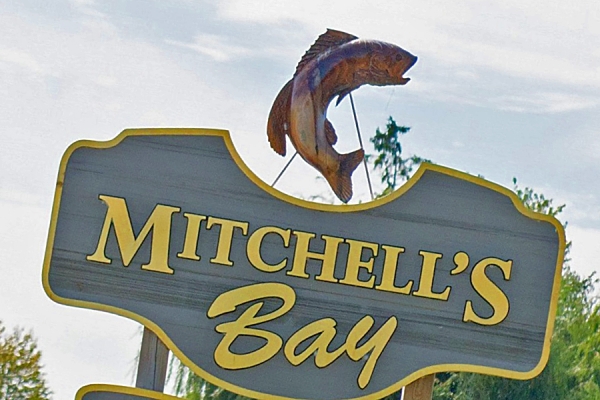 A trio of UWindsor scientists will join ice fishers on Mitchell’s Bay in search of data to further understanding of Great Lakes ecosystems.
A trio of UWindsor scientists will join ice fishers on Mitchell’s Bay in search of data to further understanding of Great Lakes ecosystems.
Among the people drilling through the ice on Mitchell’s Bay fishing for perch, walleye, and trout Tuesday will be a trio of UWindsor scientists after a different sort of catch.
Mike McKay, executive director of the Great Lakes Institute for Environmental Research, GLIER and School of the Environment professor Ken Drouillard, and GLIER field technician Aaron Newhook will be hitting the ice on Lake St. Clair to collect water samples, measure light penetration through the ice, and drop nets to collect plankton.
They are part of a binational effort involving researchers from more than a dozen universities and federal agencies in Canada and the United States on a mission to better understand the changing face of winter on the Great Lakes.
“Climate warming has resulted in a precipitous decline in ice cover on the Great Lakes over the past 50 years,” Dr. McKay said.
“This decline affects coastal communities through increased shoreline erosion and lake-effect snowfall and may also disrupt food webs within the lakes, since many organisms time lifecycle transitions to seasonal cues.”
The Great Lakes are the largest source of fresh water in the world. In the region, climate change has manifested itself as warmer air temperatures, changing precipitation patterns, and less ice and snow cover. While climate change most impacts the Great Lakes in the winter months, the field research tends to take place between May and October.
“The reality is winter remains a black box in our understanding of Great Lakes ecosystems,” said McKay. “To better predict the effect of declining ice cover on life in the lakes, we need to have a more comprehensive understanding of the winter season.”
The Winter Grab involves researchers from Ontario, Michigan, Ohio, Illinois, Minnesota, and New York, and will involve sampling from the western tip of Lake Superior to Lake Ontario’s Bay of Quinte and the St. Lawrence River.
One team will use a fan-driven airboat to glide over the ice. Other teams plan to use snowmobiles, sleds, or all-terrain vehicles. In areas where the ice isn’t safe or the water is open, scientists will take samples from piers.
McKay, Dr. Drouillard, and Newhook will be taking to the ice on foot. Working with Fisheries and Oceans Canada, McKay will also provide equipment to personnel aboard the Canadian Coast Guard ice breakers Griffon and Samuel Risley to collect samples from Lake Erie and Lake Huron.
On the U.S. side, McKay and Bowling Green State University professor George Bullerjahn, an adjunct professor at GLIER, are working with the U.S. Coast Guard cutter Neah Bay to collect additional samples from Lake Erie.
Participating teams will take their samples back to their own labs for processing before shipping them out to selected labs for detailed analysis.
“This will inform us of ‘who’ is present during winter and ‘what” they are doing,” McKay said. “We will focus on the lower food web, including bacteria, algae, and zooplankton as this group is most abundant and ultimately sustains a robust fishery at many locations.”
McKay has served as the Canadian co-ordinator of a similar binational Great Lakes research project called the HABs Grab, the warmer-weather version of the Winter Grab. In the HABs Grab, short for harmful algal blooms, researchers sampled 172 locations across Lake Erie’s western basin on a single day to provide a snapshot of the toxic algal bloom and identify environmental drivers behind the phenomenon.
The Winter Grab is led by Ted Ozersky, a lake biologist at the University of Minnesota Duluth who studies aquatic food webs, nutrient dynamics, invasive species, and climate change. Other American researchers involved are from the University of Michigan, Michigan Technological University, Central Michigan University, Bowling Green State University in Ohio, Oberlin College in Ohio, Wright State University in Ohio, Lake Superior State University in Michigan, Ohio State University, Clarkson University in New York, the University of Chicago in Illinois, and the National Oceanic and Atmospheric Administration’s Great Lakes Environmental Research Laboratory in Ann Arbor, MI.
Funding for the initiative comes from the Cooperative Institute for Great Lakes Research at the University of Michigan of which the University of Windsor is the sole Canadian consortium member.
In addition to the trio of UWindsor researchers, the Canadian arm of the project involves scientists from Lakehead University, Trent University, Fisheries and Oceans Canada (also known as the Department of Fisheries and Oceans, or DFO), and Environment and Climate Change Canada.
McKay said the project is an important one.
“Aside from the important data this initiative will generate, we are using the Winter Grab as an opportunity to increase awareness of the importance of winter to Great Lakes ecosystems and to reinforce the importance of binational collaboration to address the challenges faced by this shared resource.”
—Sarah Sacheli
